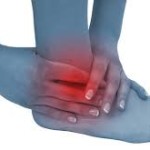 If your physician suspects that you may have an infectious arthritic joint they will require a sample of the fluid which is removed with a sterile needle as soon as possible. This fluid will be examined for white blood cells as well as cultured for bacteria and other organisms. In this way the doctor can recommend a treatment protocol which is specifically aimed at the organisms which are causing your infection. Doctors will usually order blood tests as well to determine whether or not the individual also has it in their bloodstream. Sputum culture, spinal fluid culture and urine culture may also be collected looking for bacteria in order to determine the source of the infection.
If your physician suspects that you may have an infectious arthritic joint they will require a sample of the fluid which is removed with a sterile needle as soon as possible. This fluid will be examined for white blood cells as well as cultured for bacteria and other organisms. In this way the doctor can recommend a treatment protocol which is specifically aimed at the organisms which are causing your infection. Doctors will usually order blood tests as well to determine whether or not the individual also has it in their bloodstream. Sputum culture, spinal fluid culture and urine culture may also be collected looking for bacteria in order to determine the source of the infection.
Without immediate treatment the joint can be destroyed within days, sometimes within hours. Prompt treatment must be started to prevent this from happening, even before the laboratory has identified the infecting organisms. The physician will recommend antibiotics that are broad spectrum, kill the most likely bacteria within a broad range until the infecting organism has been identified. These antibiotics will be given first by a vein to ensure that enough of the drug reaches the joint. If the right antibiotic was chosen there will be improvement within the first 48 hours.
The physician may choose to do a needle aspiration of the joints in order to remove as much pus as possible to prevent damage. If a needle aspiration is difficult or unsuccessful, the doctor may recommend an arthroscopic procedure to drain the fluid.
The actual infection of the fluid is in the synovial or peri-articular tissues. About 50% of the children who have a joint infection are less than three years old but with routine childhood vaccination for Haemophilus influenza and Streptococcus pneumonia this incidence is decreasing.
The physician may or may not offer x-rays of the involved joint because they are not diagnostic of an acute infection. However they can also pick up other conditions that are under consideration, such as fractures. Any abnormalities in the early stages of infectious arthritis are limited to the soft tissue will not show under x-ray. However, after 10 to 14 days of being untreated the destruction will be visible on x-ray.
Individuals who are at risk for Septic Arthritis or Infectious Arthritis are those who are taking immune suppression medicines, intravenous drug abusers, have had a past history of joint disease injury or surgery, or who may have an underlying medical conditions such as diabetes, alcoholism, sickle cell or rheumatic disease.
References:
(1) PubMed Health: Septic Arthritis
http://www.ncbi.nlm.nih.gov/pubmedhealth/PMH0001466/
(2) MedlinePlus: Septic Arthritis
http://www.nlm.nih.gov/medlineplus/ency/article/000430.htm
Resources:
MayoClinic: Septic Arthritis
http://www.mayoclinic.com/health/bone-and-joint-infections/DS00545
| Advertisement | |
 |
|


Leave a Reply